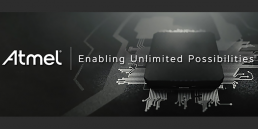ARTICLE | I got my XML back. Now what?
May 3, 2017
If you’re new to DITA conversion projects or you’re planning on converting content soon, then you should give some thought to all the pieces that go into a successful conversion. A well thought out content strategy will help guide you through the process of conversion, but if you haven’t considered all the minutiae, this article will help fill in the blanks.
ARTICLE | Converting to DITA – mastering the task
April 30, 2017
At the core of topic-based writing is the DITA task. Master the task and you start mastering DITA content (or any topic-based content). Concepts and references are important too, but once you have mastered the task, everything else just falls into line.
ARTICLE | DITA conversion and metadata
April 14, 2017
One of the most overlooked aspects of DITA conversion is including metadata in your conversion project. Metadata is a powerful tool. Please, leverage it! (Go ahead and picture me shouting this from the rooftops.)
ARTICLE | Migrating to DITA – best practices for authors to consider before converting legacy content
April 10, 2017
When doing any sort of conversion from one format to another, the riding principle is always GIGO (garbage in, garbage out). If your legacy content is not particularly good, then converting it to DITA will only create indifferent content in a so-so DITA markup. The result: failure. So what authoring best practices should you consider before converting your legacy content?
ARTICLE | Getting great DITA conversion results
April 5, 2017
Although conversion is only a small part of your DITA adoption project, it’s the part that causes even smart people to break out into hives. How does one go from a regular, flat document to a series of DITA topics and maps with the correct markup? How do you do that without losing important information? What’s the best way to do it? What tools do you use? How do you start?
WEBINAR | A Tale of Two Formats; Creating content with Word and DITA XML simultaneously
July 13, 2016
Join Catherine Long and Rich Perry of Varian Medical Systems as they explain how you can make the process of moving to DITA easier (and at your own pace), and perhaps cheaper, for everyone involved with a dual publishing approach.
WEBINAR SLIDES | Migration to DITA – The Atmel Story
March 9, 2016
Atmel Corporation’s Morten Haaker discusses how Atmel, a global semiconductor company, approached the issue of content conversion as an integral part of their DITA implementation.






